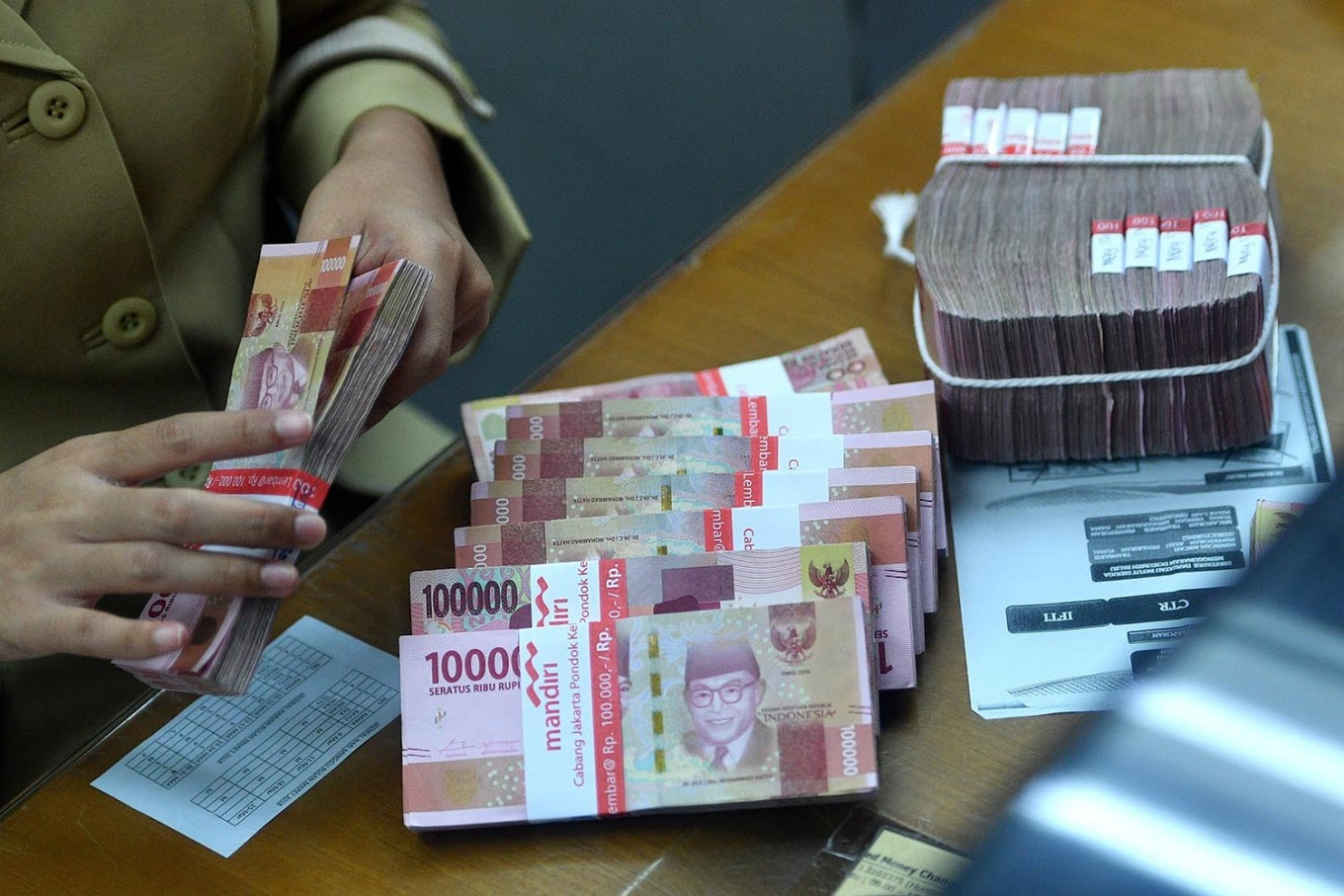News
Inflation eases, but Rupiah depreciation and US tariffs loom
Tenggara Strategics April 19, 2025 An employee counts rupiah bills at a money changer in Jakarta on March 14. (Antara/Sigid Kurniawan)
An employee counts rupiah bills at a money changer in Jakarta on March 14. (Antara/Sigid Kurniawan)
Statistics Indonesia’s (BPS) latest inflation data for March revealed a lower-than-expected headline inflation rate for the month, the lowest March inflation rate among Southeast Asian countries. The year-on-year (yoy) inflation rate was recorded at 1.03 percent, notably lower than prior projections of 1.17 percent and below Bank Indonesia’s target inflation range of between 1.5 and 3.5 percent.
Annual core inflation, however, stayed relatively within expectations at 2.48 percent, and the low inflation rate can be explained by a slow rebound from the consecutive deflation of previous months. Meanwhile, the month-to-month (mtm) inflation rate reached 1.65 percent, slightly higher than the annual inflation rate, while year-to-date (ytd) inflation reached 0.39 percent. Electricity prices emerged as the top contributor to inflation in March, accounting for 1.18 percentage points out of the total 1.65 percent increase, while the prices of gold and precious metals were the leading contributors to annual inflation, adding 0.44 percentage points to the year-on-year figure.
Electricity prices in Indonesia, typically a small contributor to inflation due to strict price control laws on electricity distribution, contributed significantly to March inflation due to the expiration of temporary subsidies, particularly the 50 percent electricity tariff discount.
The relatively low inflation rate combined with ongoing depreciation of the rupiah has raised concern about the purchasing power of Indonesians. To put in in perspective, the rupiah reached an exchange rate of Rp 16,849 per United States dollar on Tuesday, nearing the psychological barrier of Rp 17,000 per US dollar. The local currency has been under pressure since late last year, but the situation has been exacerbated by the flight of foreign capital from domestic markets. This capital flight is driven not only by global risk aversion but also by domestic uncertainty, including skepticism toward the newly formed investment agency Danantara, rising militarization rhetoric, sudden budget cuts and underwhelming state revenue performance.
Nevertheless, the current macroeconomic outlook is heavily impacted by the recent trade policies of US President Donald Trump, who applied a sizable 32 percent tariff on Indonesian exports to the US. In a bid to ease tensions, President Prabowo Subianto has announced that Indonesia will adopt a concessional approach in trade negotiations with the US. Import taxes on US goods, including steel, mining products and health equipment, will be reduced to between zero and 5 percent, down from the previous 5 to 10 percent. Additionally, import taxes on electronic goods such as mobile phones and laptops from all countries will be lowered to 0.5 percent, previously 2.5 percent.
On the other hand, inflation could rise gradually in coming months, driven by the upcoming Idul Adha holiday, which typically drives up food prices. These developments, in tandem with the US tariffs, are expected to sustain demand for safe-haven assets like gold, which presents a unique opportunity for Indonesia.
As the eighth-largest gold producer in the world, Indonesia stands to benefit from the rising value of gold as an asset, which has increased in global price by 27.18 percent over the past year. The commodity’s rising value has presented Indonesia with some strategic opportunity. The recent establishment of Indonesia’s first bullion bank, licensed by Bank Syariah Indonesia, is expected to help the country retain more of its gold within national borders, potentially offering a buffer against currency volatility.
The government has also been pushing gold producers to sell their output in the domestic market to create more economic activity. For example, gold and copper mining company PT Freeport Indonesia agreed to supply 30 tonnes, out of its annual production of 50 tonnes, to state-owned gold mining company PT Aneka Tambang (Antam) for five years, valued at US$12.5 billion.

